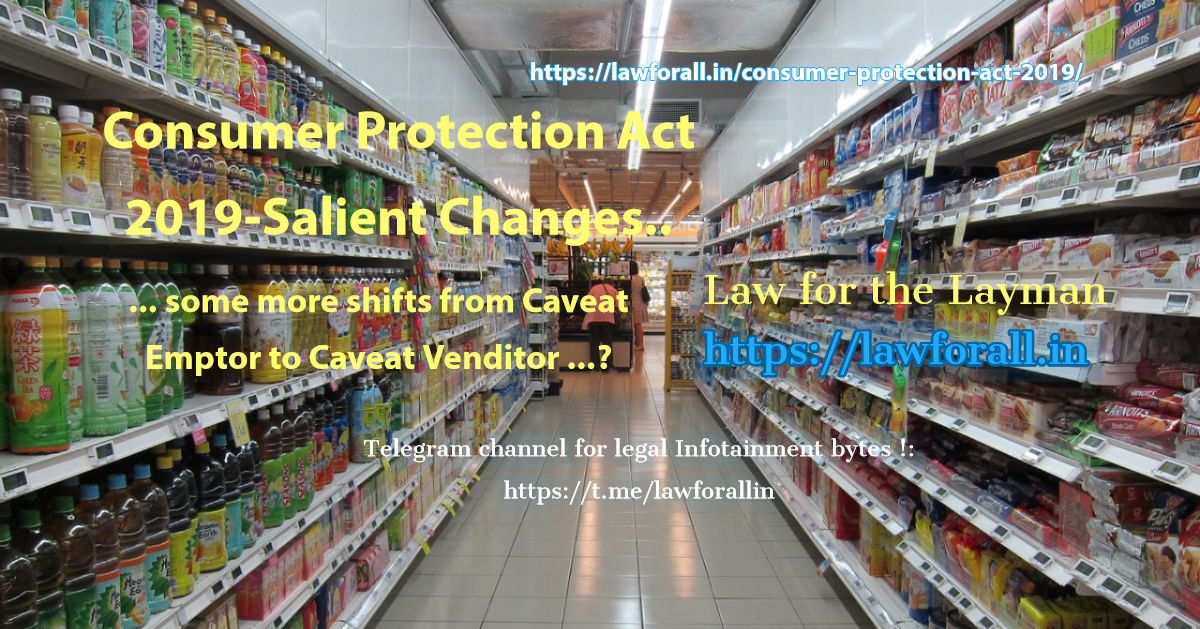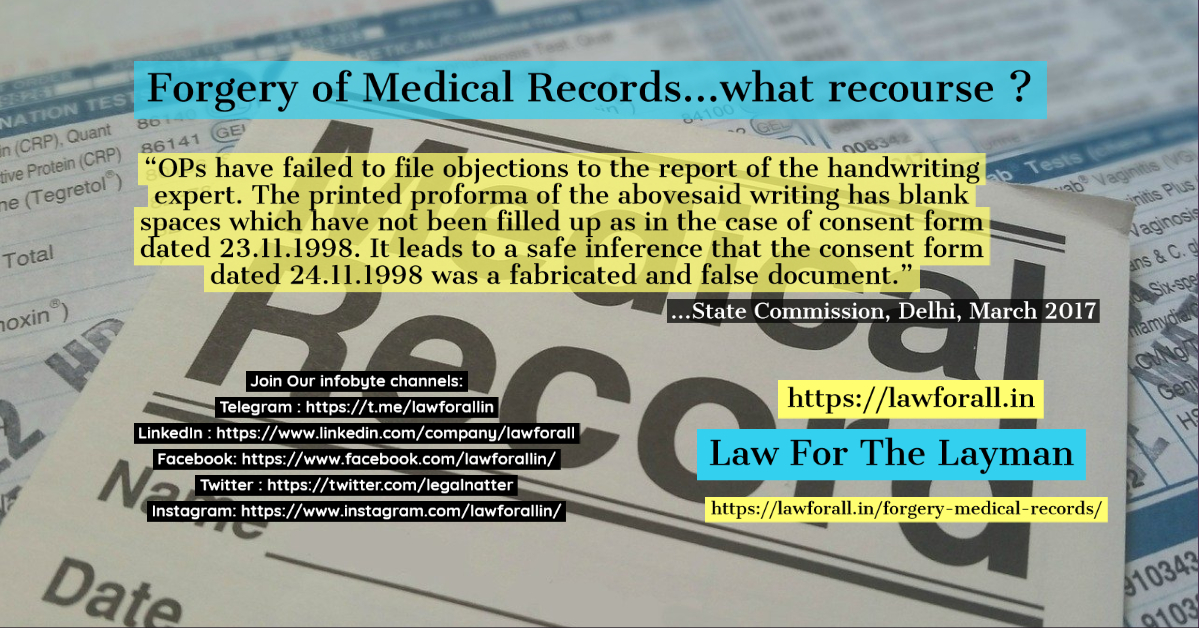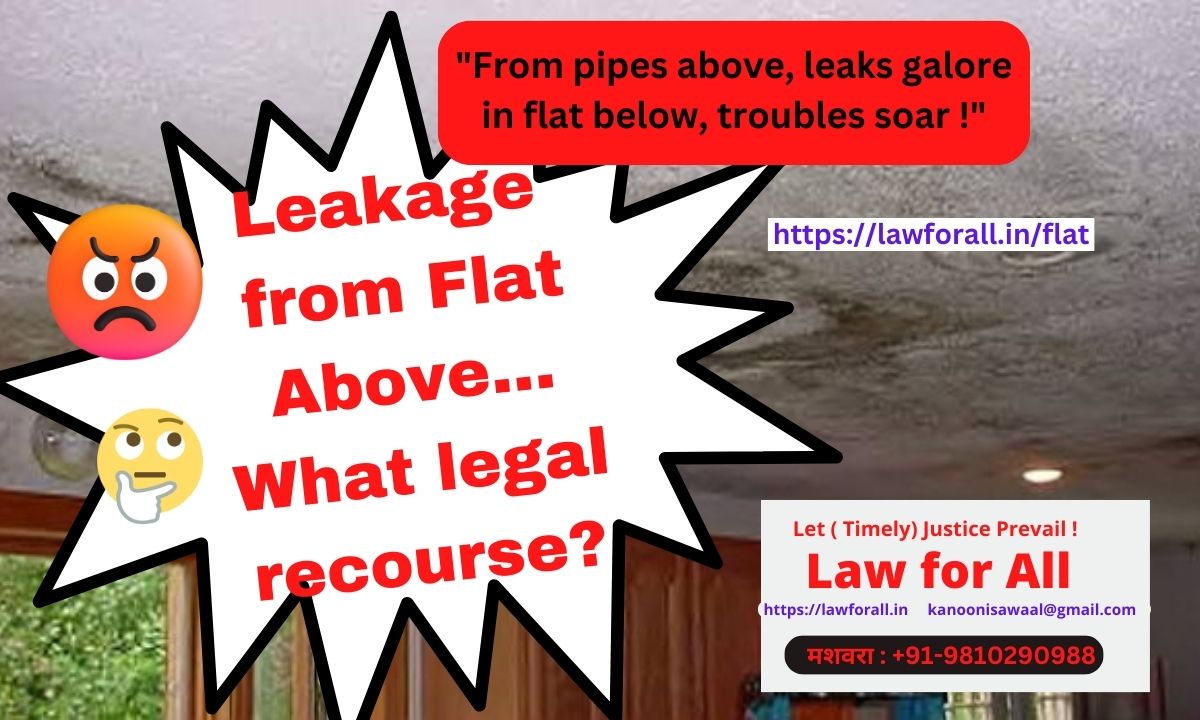Consumer Protection Act 2019- from Caveat Emptor to Caveat Venditor
Consumer movement that includes advocacy and protection has had a long history. Notables in the field from 18th century onwards include Herbert Hoover , Upton Sinclair and Ralph Nader. The 35th president of United States in a speech on 15th March 1962 spoke about four basic rights of consumers namely right to safety, right to be informed, right to be heard and right to choose. In ancient India as well welfare and protection of consumers finds mention at many places. Manu Smriti, for instance, stressed on ethical trade practices, no adulteration, inspection of weights and measures, market price set by the king etc. Kautilya’s Arthshastra defines laws regarding weights and measures, penalties on traders indulging an adulteration , role of the State in regulating trade and its duty to prevent crimes against consumers. The Consumer Protection Act (CPA) in India is a natural extension of all these developments. The Consumer Guidance Society of India was the first consumer organization established in India in 1966.
Post independence Acts such as the Prevention of Food Adulteration Act, 1954, Essential Commodities Act, 1955, Monopolistic Restrictive And Unfair Trade Practices Act, 1969, Standard of Weights And Measures Act, 1976 etc. also incorporate various measures of Consumer protection. However, a strong need was always felt for a specific set of laws to protect consumers from exploitation , save them from adulterated and sub-standard goods and services and to safe guard their interests. Accordingly, the Consumer Protection Bill, 1986 was introduced in the Lok Sabha on 5th December, 1986, and later promulgated as Consumer Protection Act, 1986.
While amendments have been carried out in CPA 1986 from time to time, need for a comprehensive overhaul was long felt. Accordingly the Consumer Protection Bill, 2019 was introduced in Lok Sabha by the Minister of Consumer Affairs, Food and Public Distribution, Mr. Ram Vilas Paswan on July 8, 2019. The Indian Parliament passed the Bill on 6th August 2019 and the Consumer Protection Act 2019 ( New Act) received the assent of the President of India and was published in the official gazette on 9 August 2019. The New Act will come into force on such date as the Central Government may so notify. It will replace the more than three decades old Consumer Protection Act 1986.
As can be readily understood, much has changed between 1986 and 2019. Liberalization, globalization, the digital age and corresponding platforms such as E-commerce and much more access to Information are some of the more salient changes. The laws have accordingly to change to adapt to the present age and its challenges quite different from those in 1986.
While the CPA 2019 still seeks, as did CPA 1986 “to provide for better protection of the interests of consumers”, the nature and scope of such protections is now substantially enhanced as well as clarified over the earlier CPA. Following are some of the significant changes.
1. Definition of ‘Consumer’ expanded : A consumer now also includes a purchaser who purchases goods on-line. ( S. 2(7), Explanation).
2. Liability of Endorsers : An endorser of a product / service ( for instance a Celebrity inviting you to buy a house) finds mention in CPA 2019. Endorsers have onus (in addition to manufacturer / service provider ) to not participate in false / misleading advertisements. (S. 21).
3. Goods now explicitly include ‘food’ as well: As defined in Food Safety and Standard Act 2006. (S. 2(21). So, every food vendor, including food delivery platforms are also now in the ambit of CPA 2019.
4. Services now explicitly include ‘Telecom’ as well : As set out in S. 2(42). Interestingly though, the definition of Telecom services is not there. Perhaps it is considered as a very common in-use term.
5. Product Liability introduced : Whole of chapter VI of the new Act is devoted to this. Manufacturers / sellers of products/services are liable to compensate a consumer for any harm caused due defective products or deficiency in services. Exceptions have also been provided therein to provide reasonable protection to the manufacturers / sellers. For instance, a product manufacturer ‘shall not be liable for failure to instruct or warn about a danger which is obvious or commonly known to the user or consumer of such product or which, such user or consumer, ought to have known, taking into account the characteristics of such product.’
6. Unfair Contracts introduced : S. 2 (46) explicitly introduces this and other sections provide for various reliefs, including nullification of such contracts. Certainly this is a welcome step.
7. Scope of ‘unfair trade practices’ enhanced: S. 2(47) elaborates on such practices and includes, for instance, misleading advertising, refusal to take back defective goods, refusal to refund consideration for such goods within period specified( and if no period specified within thirty days) etc. An unfair trade practice also includes ‘(ix) disclosing to other person any personal information given in confidence by the consumer unless such disclosure is made in accordance with the provisions of any law for the time being in force.’
8. Pecuniary Jurisdictions enhanced : Now consumers can approach relevant District Commissions for complaints valued upto Rs. 1 Crore (S. 34(1)), State Commissions for complaints valued above Rs. 1 Crore and upto Rs. 10 Crore ( S. 47(1)) , and the National Commission for complaints valued above Rs. 10 Crore ( S. 58(1)). This is expected to reduce the burden on the State and National Commissions.
9. Locational Jurisdiction of the Consumer Commissions expanded : Now complaints can be made in the jurisdiction where the complainant resides or personally works for gain (S. 34(2). Per CPA 1986 complaints had to be instituted where the Opposite Party resided or conducted business, or where the cause of action arose. This will certainly ease the burden on the complainants as they can institute a complaint at district level where they reside and need not travel afar to pursue their complaints. Besides, it may also reduce burden on the state and national level Commissions.
10. Admissibility of complaints to be decided within twenty-one days: Although this was there in CPA 1986 as well, CPA 2019 makes this stronger with an enabling provision. That is, if the issue of whether the complaint is admissible or not to begin with ( for instance, the Complainant may not be a consumer as per the Act, or the Commission where the complaint is lodged may not have jurisdiction) is not decided within twenty-one days of the Complaint being made, the complaint shall be ‘deemed to have been admitted’. (S. 36(3).
Interestingly, this provision seems to be only for the District Commissions and is lacking in case of State and National Commissions. Procedural amendments in rules may follow.
11. Judicial Review introduced : The District, State and National Commissions can all review their own orders if there is any error apparent on the face of the record, either of their own motion or on an application made by any of the parties to the complaint within thirty days of such an order. ( S. 40, S. 50 and S. 60 ) . This is a welcome step and will reduce the burden of appeals on State and National Commissions.
12. Appeal from State to National Commission only when substantial question of law : While CPA 1986 did not ask for any such grounds, CPA 2019 allows for appeal only in this specific case, the issue of whether the appeal rests on a ‘substantial question of law’ to be decided by the National Commission ( S. 51(2) ). Hence CPA 2019 renders the State Commissions as practically the last forums.
At the same time however, an appeal lies both on facts and question of law if someone fails to comply with an order of a Commission and punishment thereupon (S. 72(1) and S. 73(1). S. 73(1) prescribes the hierarchy (as before) as District, State, National Commissions with final appeal lying with the Supreme Court. This raises the specter of disobedience of a lower forum orders to get the opportunity to agitate the matters again in front of higher forum.
13. Appeals from National Commission to Supreme Court only when complaints originally filed in National Commission: This is clear from a reading of S. 67. This means that a complaint filed in a District Forum can be pursued only till corresponding state forum and no further.
14. E-filing of complaints : In a strong effort to be consumer friendly, CPA 2019 provides for a consumer to electronically file his/her complaint to the forum having required jurisdiction ( S. 35 (1), proviso). S. 101(2)(p) enables the Central Government to formulate the rules for this purpose.
15. Hearings via video-conferencing : At the District level, upon an application made for hearing or for examination of parties in person or through video conferencing, the District Commission may, on sufficient cause being shown, and after recording its reasons in writing, allow the same. S. 38(6), proviso.
16. Central Consumer Protection Authority established : Whole of chapter III ( S. 10 to S. 27) of CPA 2019 is devoted to the Central Consumer Protection Authority ( CCPA). The CCPA will have an investigation wing to conduct inquiry/investigation into consumer law violations. It has been granted wider powers such as suo-motu actions, recall products, order reimbursement of the price of goods/services, cancel licenses and file class action suits, if a consumer complaint affects more than one individual. Additionally, the Authority can also file complaints and intervene in matters before corresponding consumer commissions.
The major focus of the CCPA is violations such as misleading advertisements that have potential to affect a large number of consumers. Existing District Collectors will carry out the inquiries and investigations. Search and seizure may be carried out by officers appointed under CCPA, or by existing District Collectors. Appeals against orders of CCPA lie before the National Commission.
17. Mediation introduced : CPA 2019 introduces alternate dispute resolution mechanism of mediation with chapter V ( S. 74 to S. 81 ) devoted to it, as well as at other places such as S. 37. Hopefully, this will make dispute resolution quicker and easier for all the stakeholders and also reduce pressure on the Consumer Courts.
CPA 2019 , at an overall level seems to be more pro-consumer than its predecessor. with more shift from shift from maxim ‘Caveat Emptor’ ( primarily the Buyer has the responsibility to buy at his own risk and so should be cautious and aware) towards ‘Caveat Venditor’ ( the onus is on the Vendor for any problem that the buyer might encounter with a service or product) . It remains to be seen as to how it works out in actual practice.
All your experiences, comments, thoughts welcome !
For any further queries and discussions, please see the the contact us page.
किसी भी प्रश्न और चर्चा के लिए कृपया हमसे संपर्क करें। यह पृष्ठ देखें।
PS : This article is also posted at : https://www.linkedin.com/pulse/consumer-protection-act-2019-from-caveat-emptor-venditor-sodhi …feel free to comment therein as per your convenience.




